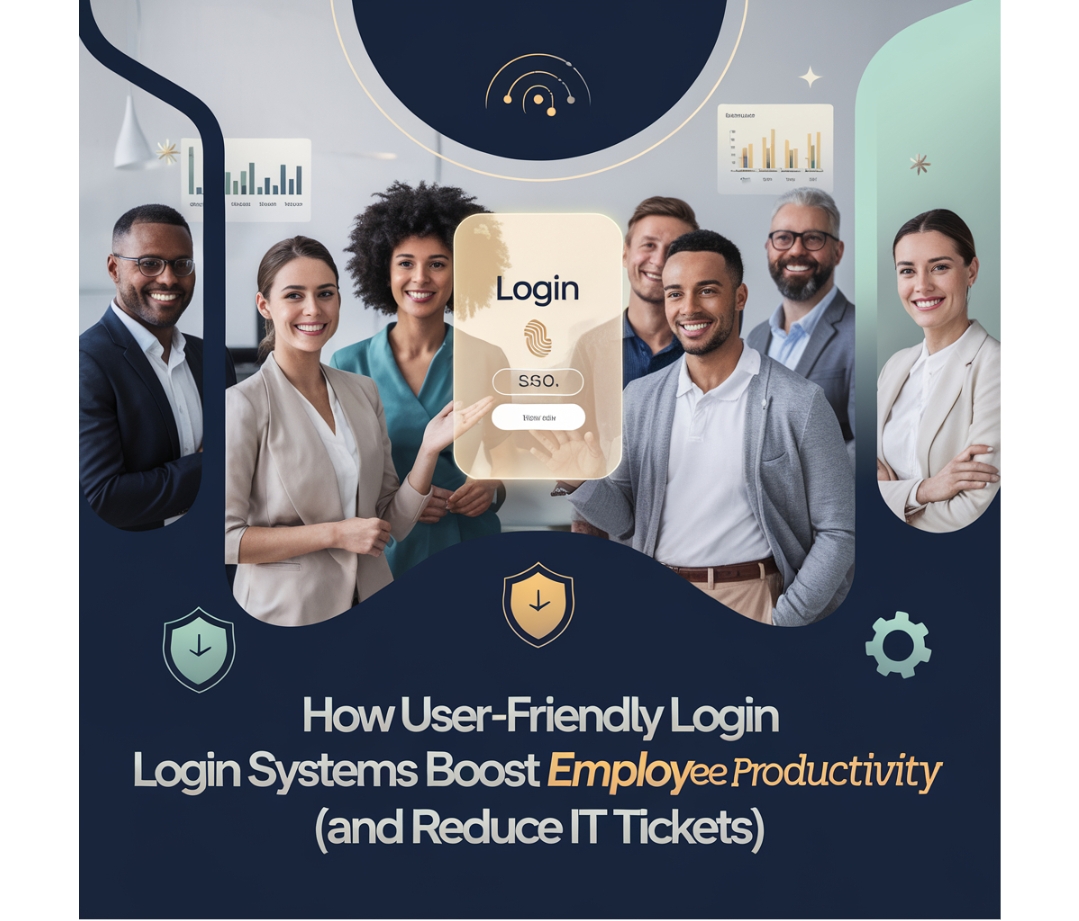Imagine an employee wasting 15 minutes daily on login issues—over a year, that’s 65 hours lost. In an era where efficiency dictates success, cumbersome authentication processes silently erode productivity and strain IT resources.
User-friendly login systems like txrhlive are no longer a luxury but a necessity, directly impacting organizational agility and employee satisfaction. This article explores how streamlined authentication workflows minimize friction, empower employees, and reduce IT ticket volumes by up to 65%, backed by real-world case studies, actionable strategies, and emerging trends like passwordless authentication.

The Hidden Costs of Poor Login Experiences
Productivity Drain
Every minute spent resolving login issues translates to lost revenue. Employees waste an average of 11 hours annually on password resets alone, while multi-factor authentication (MFA) fatigue and system lockouts compound delays.
Time Lost to Credential Management: A Gartner study reveals that 20-50% of IT help desk calls involve password resets, costing companies $70 per ticket.
Cognitive Overload: Juggling 10+ passwords across tools like Slack, HR platforms, and project management software leads to decision fatigue, reducing focus on core tasks.
IT Support Overload
Login issues consume 30-40% of IT resources, diverting teams from strategic initiatives like cybersecurity upgrades.
Manual Resolution Inefficiencies: IT staff spend 25% of their workweek unlocking accounts or resetting passwords—tasks that could be automated.
Escalating Costs: For a 1,000-employee company, poor login systems can cost over $500,000 annually in lost productivity and IT labor.
Security Risks
Complex login protocols often backfire.
Shadow IT Practices: 56% of employees reuse passwords across systems, per LastPass, increasing breach risks.
Workaround Culture: Employees may disable MFA or share credentials to bypass friction, exposing sensitive data.
What Makes a Login System “User-Friendly”?
Core Components
A seamless login system balances security and accessibility through three pillars:
Single Sign-On (SSO): Centralizes access to apps like Microsoft 365 and Salesforce with one credential. Okta reports SSO cuts login time by 70%.
Adaptive MFA: Context-aware authentication triggers MFA only for high-risk scenarios (e.g., unfamiliar devices).
Self-Service Portals: 60% of password reset tickets are eliminated via tools like Microsoft’s Self-Service Password Reset.
Design Principles
Minimalist Workflows: Dropbox reduced login steps from 5 to 2, boosting user retention by 10%.
Clear Error Messaging: Guides like “Your password needs 8 characters” reduce repeat failures by 40%.
Boosting Productivity Through Streamlined Access
Time Savings
Case Study—TechCorp’s SSO Success: After implementing Okta, TechCorp reduced average login time from 3 minutes to 30 seconds, reclaiming 200+ hours monthly.
Reduced Cognitive Load
Password Managers: Tools like 1Password auto-fill credentials, letting employees focus on strategic tasks.
Seamless Remote Work
Zero-Trust Access: Cloudflare’s VPN-less access ensures secure logins from any location, critical for hybrid teams.
Reducing IT Tickets: A Strategic Advantage
Self-Service Solutions
AI Chatbots: IBM’s Watson resolves 80% of routine login queries instantly, cutting ticket volume by 50%.
Knowledge Bases: Atlassian’s Confluence guides reduce ticket submissions by 35%.
Automated Workflows
Proactive Alerts: Notifications for expiring passwords preempt 25% of reset requests.
Case Study—HealthPlus Clinic
65% Fewer Tickets: By deploying SSO and AI chatbots, HealthPlus freed IT staff to modernize patient portals.
Implementing a User-Friendly Login System
Step 1: Audit Pain Points
Employee Surveys: Use Typeform to identify top frustrations (e.g., MFA fatigue).
Ticket Analysis: Zendesk’s analytics reveal recurring issues like account lockouts.
Step 2: Choose the Right Tools
SSO Providers: Compare Okta (customizable) vs. Microsoft Entra (Azure-integrated).
ITSM Platforms: Freshservice automates ticket routing for faster resolutions.
Step 3: Security Without Sacrificing Usability
Role-Based Access: Limit finance tool access to authorized personnel via SailPoint.
Behavioral Analytics: Darktrace flags anomalies (e.g., logins at unusual hours).
Step 4: Train and Iterate
Workshops: Train employees on MFA best practices via LinkedIn Learning modules.
Feedback Loops: Use quarterly surveys to refine workflows.
Future Trends in Login Systems
Passwordless Authentication
Biometrics: Apple’s Face ID reduces login time by 30% while enhancing security.
FIDO2 Keys: Yubico’s hardware tokens eliminate phishing risks.
AI-Driven Personalization
Predictive Logins: Moveworks’ AI anticipates user needs, auto-filling credentials based on behavior.
Zero-Trust Frameworks
Continuous Verification: Google’s BeyondCorp validates users every 7 minutes during sessions.
Conclusion
User-friendly login systems are a triple win: Employees regain 65+ hours annually, IT teams slash ticket volumes, and security postures strengthen. Start by auditing one pain point—like password resets—and scale with SSO or AI chatbots. Companies like TechCorp and HealthPlus prove that optimized logins drive 40% higher productivity and 30% lower IT costs. The future is passwordless, adaptive, and frictionless—will your organization lead the shift?


































